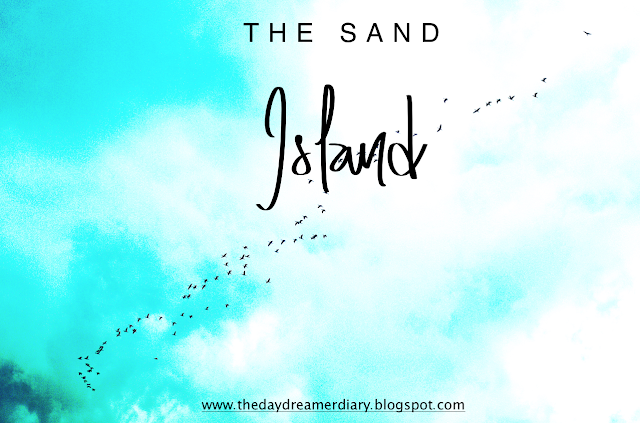The wild and noisy carnival parade was going on in the streets of Bordeaux, paralyzing its transportation network. Ignoring the craziness and taking advantage of the fact that the first Sunday of the month the city museums are free, I walked with a dear friend and her children all the way to the Musée d’Aquitaine, our final destination on a rather overcast day.
The illustrated poster hanging from the façade announced an exhibition on Tromelin, the island of forgotten slaves in the Indian Ocean. Bordeaux has an intimate history with slavery - a painful and shameful past it does not like to boast even though it is at the roots of its economic power and identity. It is all the more surprising and encouraging to notice that local museums make a point of informing visitors about this chapter of the city’s story and economic development.
Another reason encouraged me to to visit the exhibition: years ago I read a book by French author Irène Frain, Les Naufragés de l’île Tromelin. This haunting book speaks of a group of slaves abandoned on a forlorn island, lied to and left to their own devices for 15 years. Before even going into the details of the Bordeaux exhibition, I would like to tell you that this is a book to read, one that will engrave words, images and feelings in your mind. Strangely enough, I have not found the book in the museum library the day of my visit… It is also true that I have lacked the time and focus to linger there…
The Bordeaux Musée d’Aquitaine is a classy yet unpretentious building; it warmly welcomes you in a light filled hall where you can grab for free a guide to the exhibition and even an activity book for children. From then on, we plunge into an incredible sea voyage and perilous human story: the French trade vessel Utile set sail from the city of Bayonne on the south western coast of France in 1760 to reach the island of Mauritius in the Indian Ocean.
Beautifully crafted and spacious wooden tables, barrels and wood engravings guide the visitor through the contents of the ship holds - so many produces traveling on high seas for months, from one continent to the other: textiles, spices, biscuits, wine, oats, preserved meat and even live cattle.
The itinerary of the exhibition is clearly indicated and visitors circulate quite smoothly despite the crowd. We managed to read, admire, draw, imagine, dream and exchange ideas quite peacefully.
In some of the rooms, visitors can leaf through the fascinating pages of Savoia’s illustrated album. The talented illustrator accompanied one of the recent excavations and research teams during an entire month on the island. The drawings and dialogues infuse the dramatic story with humanity; the slaves come alive through the eyes of one of the girls who survived the shipwreck and was saved by Tromelin himself.
On the route to its final destination, the Utile vessel stopped in Madagascar to embark Madagascan slaves - an extremely lucrative and fraudulent activity for the captain and his crew. What they had not counted on though, is that in 1671, the ship tragically sank trapped at night in the treacherous waters and sand banks of the ocean. Stranded on a deserted island recalling Polynesian motus, the 210 survivors - slaves included - built a boat with one idea in mind: escaping.
Too small to welcome everyone on board, the makeshift boat left without the slaves in the end. Seen as inferior and less valuable beings given the circumstances, they were abandoned with the promise of sending back another ship to save them.
Lies, then now and forever.
How did people uprooted from their land, environment, and families to be traded before being shamelessly abandoned to certain death have managed to nourish their hopes and sanity on Tromelin island? How have they acted and resisted against the elements - storms, lack of shade and water for 15 years?
Yes, 15 long, perilous, cruel years. 15 years of freedom too. Free slaves. How darkly ironic.
The first excavation to document the tragedy of the Utile and its men was launched in 2006 - so incredibly late don’t you think? - and from then on underwater and land research teams unveiled the incredible secret and details of the slaves’ social community and organisation on the island. Aside from the strictly practical side of their lives - recycling, crafting kitchen utensils, building village walls and a brick oven - what the findings show is that the castaways’ first need was to ensure their own protection, to join forces to be stronger, to share their knowledge and skills and to understand their environment to turn it to their advantage. What is amazing, is the need and drive to form a social structure to be able to make decisions, find food, cook, share food, strategize to live, preserve traditions, and rituals such as burials and even become inventive!
Across the centuries, the message still rings true: society can most certainly be a ruthless grinding machine. Let’s acknowledge also its duality through its power as an agent of change, hope and strength.
Fifteen years after the shipwreck, eight castaways - seven women and an eight-month old baby - imagine, a birth! - were saved by Lieutenant Tromelin. The island was named as a tribute to the man.
At least one man kept the promise.
Credits: StockSnap & TheDaydreamer








0 commentaires:
Post a Comment
Let me hear about your daydreams!